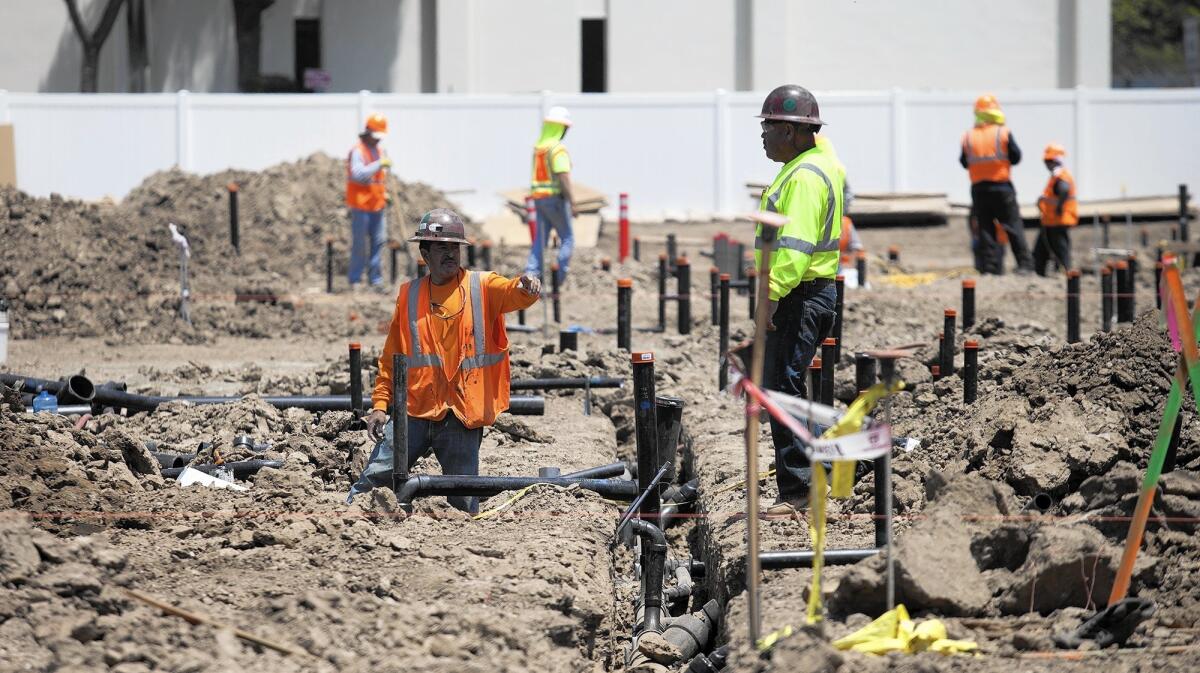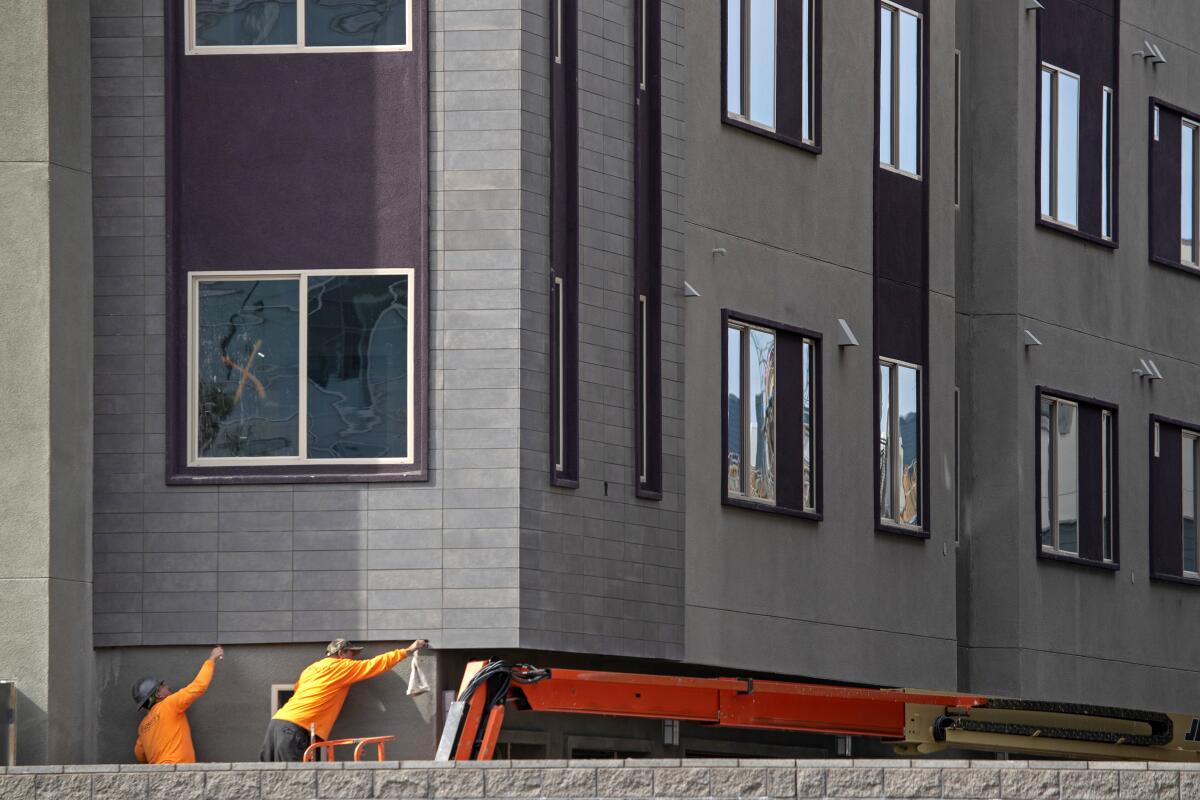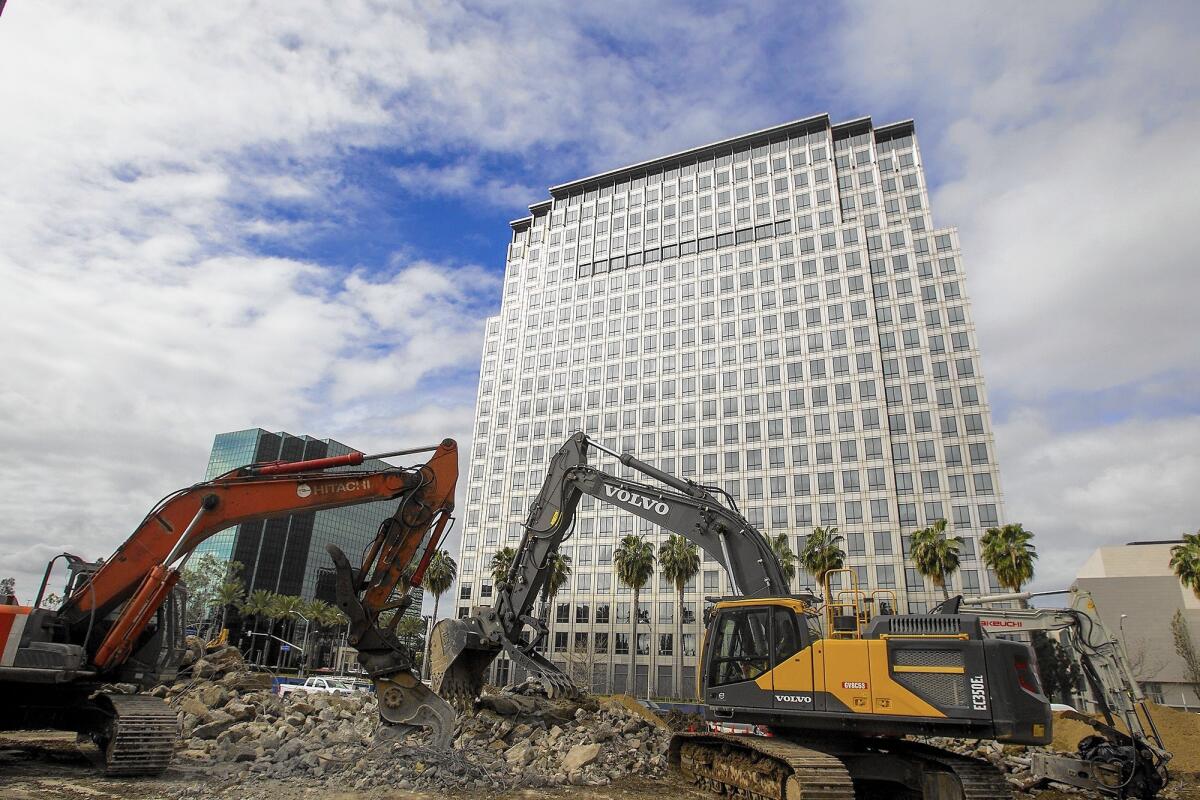Potential housing mandates take coastal cities by surprise

- Share via
Newport Beach needs to approve 4,800 new housing units over the next decade.
Historically, that would take about 40 years, said Seimone Jurjis, Newport’s community development director.
But with pressure from state leaders to address the housing crisis, the Southern California Assn. of Governments voted this month to shift the more of the mandate to build 1.3 million new homes the state says Southern California needs over the next 10 years toward the coast.
That means Orange County cities may be responsible for tens of thousands more of those units.
After SCAG — which represents Orange, Los Angeles and four other counties — reshuffled the allocations in a dramatic adjustment Nov. 7, Newport’s share climbed about 75% over minimums announced in October.
Costa Mesa’s share more than doubled. Huntington Beach and Fountain Valley’s more than tripled.
Costa Mesa went from 4,309 units to 11,734; Huntington, from 3,612 to 13,321.
The California Department of Housing and Community Development now must review the approved plan.
“These are huge numbers,” Jurjis said Wednesday at City Hall forum about the potential mandate. “This is going to change the landscape of Newport Beach.”

Though the state doesn’t require cities to directly build the homes, they must at least accommodate the need on paper through zoning for residential development approvals.
Figuring out where to zone those homes in Newport is Jurjis’ task.
The airport area, Newport Center and Banning Ranch — the open space in West Newport coveted by conservationists — have the most capacity, he said.
He acknowledged that developers’ attempts to build on the disused oil field have been repeatedly rejected by the California Coastal Commission and that environmentalists want to purchase the 401-acre swath of scrub and grasslands to keep it as open space.
To the latter, a pair of philanthropists promised $50 million to the nonprofit Banning Ranch Conservancy earlier this month to help it keep the property — an environmentally sensitive wildlife habitat — as a nature reserve.
Jurjis said he doesn’t support the entire property being sold to preservationists. He wants a compromise.
“I need this area so I can zone for my [housing] numbers,” he said.
Huntington Beach
In Huntington Beach, the mandated number of units grew by a staggering 9,709.
“While we appreciate the opportunity to participate in the process, the City cannot emphasize enough the potential disastrous ramifications including unnecessary legal action that may result in the [Regional Housing Needs Assessment] allocation process contemplated by the State and its sub-regions,” City Manager Oliver Chi added in a letter to SCAG on Nov. 5.
Chi pointed out that cities like Huntington Beach are tasked with identifying eligible sites and obtaining housing element certifications from the state “under more stringent site criteria and site analysis requirements,” he wrote.
Huntington officials disagree with the state’s assertion that changes in housing element law apply to charter cities and continue to litigate with the state. They want more local input into the process.

The city pledged to support any legal action taken by SCAG against the state Housing and Community Development on accusations that the HCD “ignored state law in determining the final regional housing need,” Chi wrote.
“Huntington Beach has done more for the affordable housing since 2013 (the current State Regional Housing Needs Assessment — or RHNA — planning cycle) than nearly any other city in our region,” Chi added in a Nov. 10 report.
Laguna Beach
Laguna Beach, which must set aside enough land for 390 homes, is also considering its legal options. It had previously been told to approve 55.
“I am very concerned about this shift of housing units to coastal cities,” said City Manager John Pietig. “There does not appear to be a logical basis for [the] shift and the targets are not attainable.”
Fountain Valley
Fountain Valley’s relatively lower numbers were still a blow to the largely built-out city.
“The last-minute huge upward adjustment to the Fountain Valley allocation came as a complete surprise and we are still trying to understand the actual impact that it will have in our community,” City Manager Rob Houston wrote in an email Friday.
Fountain Valley is banking on accessory dwelling units, or “granny flats units,” helping the city reach its allocation of 4,756 new housing units — otherwise “it would seem that none of the cities that received massive increases in allocation will have any ability to achieve the numbers assigned,” Houston said, adding “that cities cannot force development as we are not property owners.”

Costa Mesa
City Manager Lori Ann Farrell Harrison said Costa Mesa “remains committed to doing its part now and in the future related to addressing this important issue in compliance with housing element laws.”
However, the city did not support the methodology used to come up with its housing requirement, she said.
While “it is important to address housing needs for the betterment of all communities,” she said, “an unattainable allotment will potentially handicap the review authority on housing projects by allowing any housing project to be streamlined whether it is good for the community or not.”
Another challenge could be Measure Y, which Costa Mesa voters approved in 2016. That measure requires public approval of projects that entail a general plan amendment or zoning change and would add 40 or more dwelling units or 10,000 or more square feet of commercial space.
So far, the city hasn’t approved any projects that would trigger a Measure Y vote.
Orange County took on a greater share of cities assigned at least 10,000 housing units. Of its 34 incorporated cities, six must zone for at least 10,000 new homes. Only four of Los Angeles County’s 88 cities need to do the same.
“Those of you that are in the housing development business — the housing gods are smiling upon you,” Jurjis said.
Daily Pilot staff writer Lilly Nguyen contributed to this report.
| Location | Prior | Current | Difference |
| Costa Mesa | 4,309 | 11,734 | 7,425 |
| Fountain Valley | 1,371 | 4,756 | 3,385 |
| Huntington Beach | 3,612 | 13,321 | 9,709 |
| Laguna Beach | 55 | 390 | 335 |
| Newport Beach | 2,751 | 4,832 | 2,081 |
| Orange County (all) | 107,978 | 182,194 | 74,216 |
All the latest on Orange County from Orange County.
Get our free TimesOC newsletter.
You may occasionally receive promotional content from the Daily Pilot.










